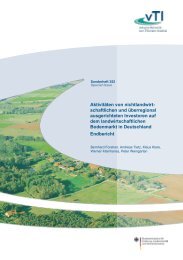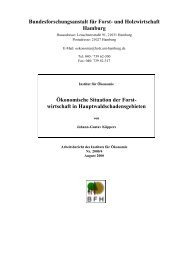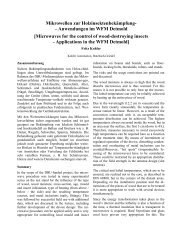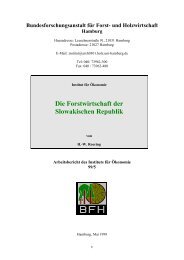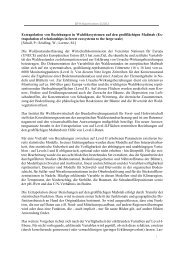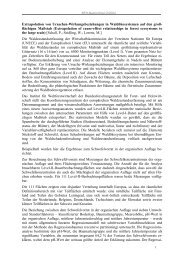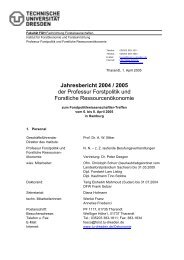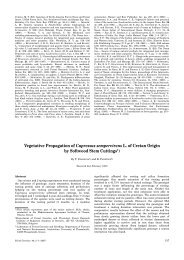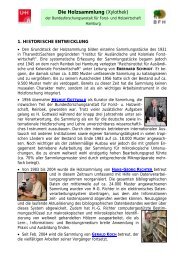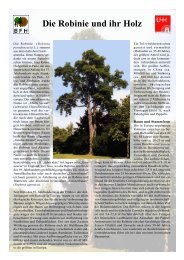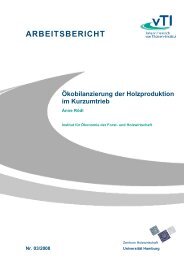STATE OF THE ART REVIEWS
STATE OF THE ART REVIEWS
STATE OF THE ART REVIEWS
Create successful ePaper yourself
Turn your PDF publications into a flip-book with our unique Google optimized e-Paper software.
1. INTRODUCTION<br />
COST ACTION E22: Environmental optimisation of wood protection<br />
Around 43% of the territory in Croatia is afforested. The most significant wood species<br />
used for exploitation are common Slavonian oak – Pendunculate oak (Quercus pendunculata),<br />
– chestnut oak (Q. petrea), common European beech (Fagus sylvatica), - silver<br />
fir (Abies alba, Mill.) and – common spruce (Picea abies). According to the 1998 Statistical<br />
Yearbook, in 1998 gross felling amounted to 3 501 627 m 3 . Gross felled timber<br />
also includes waste and loss in felling.<br />
Wood preservation in Croatia<br />
A survey on the state of affairs and position of wood preservation made in 1997 showed<br />
that the selection or removal of infected wood is today the most frequent way of protection.<br />
Chemical preservation or mechanical protection is applied only when biodegradation<br />
has been observed or the damage done, that is in the case of repressive preservation.<br />
Among the protection procedures the most widely used is water spraying of logs and<br />
preservation of sawn timber fronts and other elements by coating. Water spraying of<br />
high quality veneer logs (such as "F" and "L" oak logs) is a cheap and very efficient<br />
method of protection. Coating of log fronts with water repellent aseptic pastes is also<br />
one of the cheaper and simpler procedures of preventive protection. Repressive protection<br />
is applied only in the occurrence of insects and fungi or customers’ complaints. The<br />
survey shows that the most common problem in companies is caused by moulds and<br />
fungi affecting wood discoloration (sapstain, blue stain fungi), or in log storage by<br />
insects Platypodidae, Scolytidae and Lymexylidae (ambrosia beetles and shot hole borers).<br />
Manufacturers of oak and ash parquet sometimes have problems with Lyctus powder<br />
post beetles, whereas problems caused by Deathwatch beetle, Ptilinus beetle are<br />
noticeable only in old wooden structures. House longhorn beetle is frequently present in<br />
wooden roof constructions and beams and less frequently in joinery.<br />
Production and use of wood preservatives in Croatia<br />
During 1999 the production of wood preservatives in Croatia was at a very modest scale<br />
and hence provided for only the most urgent requirements in the forestry and wood<br />
industry. As in previous years the production of solvent born preservatives was reduced<br />
to the needs of manufacturers of joinery, and the same quantities of stains and alkyd<br />
paint have been delivered to retail as in previous years. Insecticides are produced for<br />
logs (particularly of high quality veneer logs), primarily against insects of Scolytida<br />
family (ambrosia beetles and shot hole borers). Fungicide impregnation products, produced<br />
mostly by foreign producers, are used as preservatives against the moulds on<br />
steam-dried beech timber and against sap-stains and blue stain fungi causing wood discoloration.<br />
28



